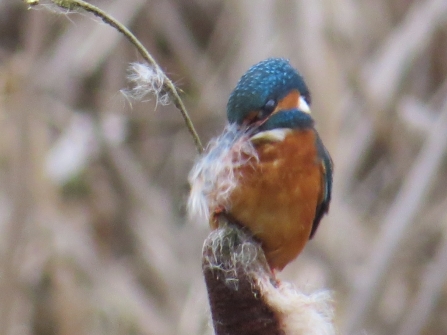It is not just the range of wildlife that is interesting, quite often it is a behaviour exhibited by an otherwise common species.
On Thursday I was briefly in the Woodland hide where there were at least 15 brambling and 14 reed bunting feeding, but the thing that caught my eye was a grey squirrel.
There were several squirrels about, but one was running passed the hide carrying something large in its mouth. I did not immediately see what it was carrying before it had gone by. However it came back along the same route and this time I could see it was carrying a baby squirrel. It later came back with a third, evidently this squirrel was moving its young family to a new home. Whilst this may not be an unusual behaviour it was one I had never seen before.
Earlier in the week I was sent a picture by a regular visitor Lynda Miller that illustrated another behaviour that I was unaware of.


